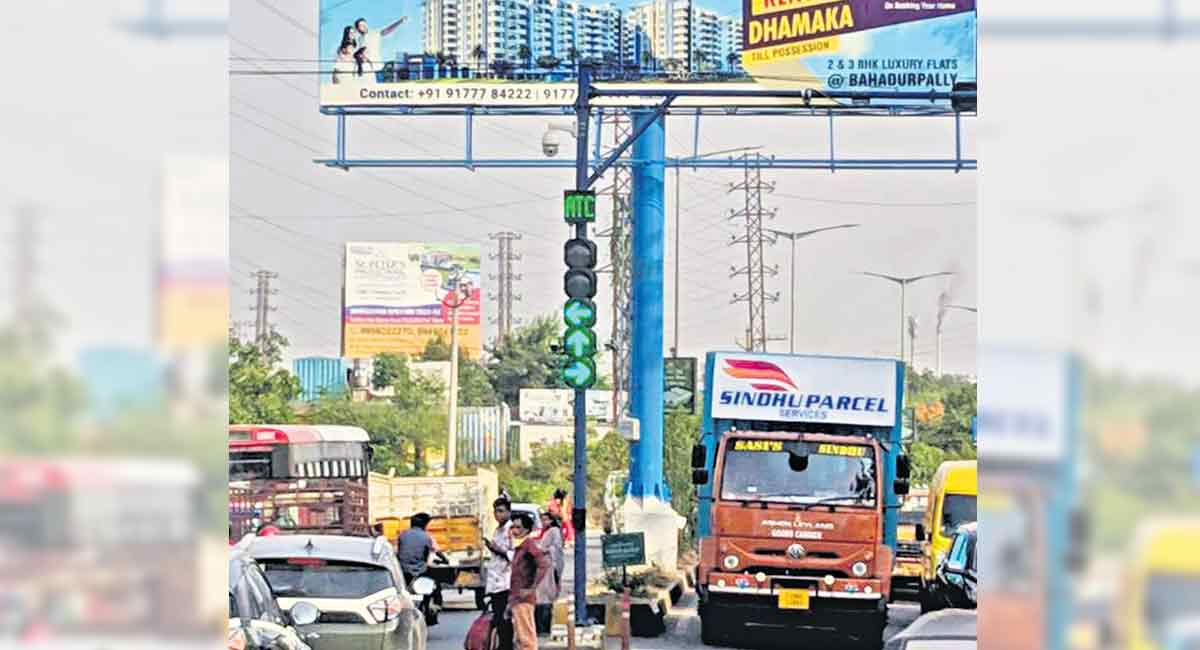New traffic signal system in Hyderabad

Hyderabad: For better traffic management at junctions in the State capital, the Greater Hyderabad Municipal Corporation (GHMC) has rolled out new Adaptive Traffic Signal Control (ATSC) systems that change traffic signal colours based on real-time traffic data.
Developed by the Centre for Development of Advanced Computing (C-DAC), the state-of-the-art adaptive control algorithm known as Composite Signal Control Strategy (CoSiCoSt), adjusts the cycle time, green splits, and offsets to support coordinating with nearby intersections to manage area-wise traffic in real-time.
This means, unlike regular traffic signals, the new ATSC systems will automatically and continuously adjust the green times based on the changing arrival patterns of vehicles at an intersection, with the objective of optimising a combination of delay and number of stops, officials said.
“Using camera-based detectors, the system is able to constantly monitor each junction movement, approaching vehicles and creates new timing sequences to match them. A central system provides monitoring of each junction data and further optimises the system at a network level to ensure synchronisation of signals to reduce system delays,” the officials said.
At present, the ATSC and Pelican Signal System (PSS) projects consist of 122 ATSC signals, 94 pelican signals, and 213 existing HTRIMS signals across Hyderabad. The major part of the project scope envisaging 57 corridors consisting of 57 ATSC signals and 157 existing HTRIMS signals is completed and is expected to deliver benefits as part of the new system.
The ATSC system improves traffic flows along major corridors in the city by reducing delays through a combination of local and network-level optimisation. The 94 Pelican signals equipped with a push-button facility provide safe pedestrian crossing through on-demand pedestrian stage. These signals are installed at strategic locations such as hospitals, colleges/schools, and commercial public places where high pedestrian footfall is present.
Key Features
• Central control of corridor traffic signals
• Signal timings based on changing traffic patterns
• Camera-based traffic sensors
• Power backup through both solar and batteries
Project Benefits
• Enhanced travel time reliability
• Less waiting times at junctions
• Reduction in city-wide congestion
• Fewer stops, fewer emissions
• Improved road safety







